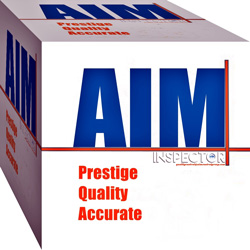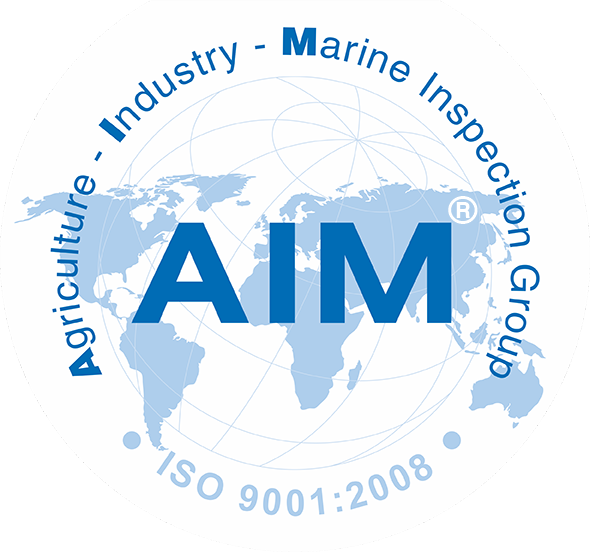Footwear Shoes Quality Control Inspection
Footwear Shoes Quality Control Inspection
AIM Control (AIM Group®) offers footwear shoes quality control inspection services are dedicated towards achieving the quality assurance requisites of the client leading to increase customer base and better reach. We specialize and have trained personnel's for all kind of shoes material, composition and shoes technology.

The major issue while importing from Asia is of quality control faced by every importer.
All AIM Control (AIM Group®) inspectors have more than 5 years' footwear and shoes quality control inspection experiences.
What should you know about safety footwear & shoes?
-
If foot protection is required, set up a complete foot safety protection program including selection, fit testing, quality control and inspection.
-
Safety footwear is designed to protect feet against a wide variety of injuries. Impact, compression, and puncture are the most common types of foot injury.
-
Choose footwear according to the hazard. Refer to "Protective Footwear".
-
Select AIM Control (AIM Group®) certified footwear. Ensure that it has the proper rating for the hazard and the proper sole for the working conditions.
-
Use metatarsal protection (top of the foot between the toes and ankle) where there is a potential for injury.
What are some causes of foot problems?
Some foot problems are so common that they can occur in virtually any workplace and under any working conditions.
|
Foot Problems |
Common Causes |
|
Severely aching feet, blisters, calluses, corns, rheumatism, arthritis, malformations of toes, fallen arches (flat feet), bunions, sprains |
Long periods of standing, hard flooring, and poorly fitted footwear: |
|
Sweaty feet, fungal infections (athlete's foot) |
Hot and humid environment, strenuous work, footwear with synthetic (non- porous) uppers |
There are no comprehensive statistics on these kinds of problems with feet.
What type of footwear & shoes are appropriate for cold conditions?
Foot protection against cold weather can be resolved by:
-
Insulating the legs by wearing warmers--"dancercise" type.
-
Wearing insulating overshoes over work footwear.
-
Wearing insulating muffs around the ankles and over the top of the footwear.

How is footwear selected?
Footwear must be chosen based on the hazards that are present. Assess the workplace and work activities for:
-
Materials handled or used by the worker and human.
-
Risk of objects falling onto or striking the feet.
-
Any material or equipment that might roll over the feet.
-
Any sharp or pointed objects that might cut the top of the feet.
-
Objects that may penetrate the bottom or side of the foot.
-
Possible exposure to corrosive or irritating substances.
-
Possible explosive atmospheres including the risk of static electrical discharges .
-
Risk of damage to sensitive electronic components or equipment due to the discharge of static electricity.
-
Risk of coming into contact with energized conductors of low to moderate voltage (e.g., 220 volts or less).
Also, evaluate the risk
-
to ankles from uneven walking surfaces or rough terrain
-
of foot injury due to exposure to extreme hot or cold
-
of slips and falls on slippery walking surfaces
-
of exposure to water or other liquids that may penetrate the footwear causing damage to the foot and the footwear
-
of exposure to rotating or abrasive machinery (e.g., chainsaws or grinders)
What symbols will be on the footwear?
The following symbols, or markings, will help you determine which footwear is appropriate for the job.
AIM Control’s footwear and shoes QC and Inspectors
Quality assurance work in general of AIM Control (AIM Group®) inspectors qualifying!
We classified the defect into three categories as follow.
-
Knowledge of quality assurance/control methods, principles, and practices, including statistical analysis and sampling techniques;
-
Knowledge of pertinent product characteristics and applicable production maintenance, or repair methods and processes;
-
Knowledge of inspection, test, and measurement techniques;
-
Knowledge of the relationship of quality assurance to other activities such as contract, engineering, supply;
-
Skill in interpreting and applying product specifications, technical data, regulations and other guideline materials;
-
Skill in conducting studies and investigations, problem analysis, and developing logical and documented recommendations;
-
Skill in written and oral communications; and Skill in establishing effective interpersonal relationships.
-
Reviewing the contractor's production activities and capabilities in light of contract quality requirements;
-
Insuring that the contractor understands the contractual requirements;
-
Reviewing the contractor's written quality or inspection procedures for adequacy;
-
Evaluating the implementation and effectiveness of the contractor's quality or inspection system including contractor-developed sampling plans;
-
Analyzing quality data to detect unsatisfactory trends or weaknesses in the contractor's quality or inspection;
-
Verifying by test or inspection that products offered to the Standards, Criterion comply with contractual requirements before they are accepted;
-
Requesting corrective action by the contractor when inadequacies are detected in the contractor's inspection or quality control;
-
Coordinating the disposition of nonconforming products and materials;
-
Investigating customer complaints and deficiency reports, and providing identification of causes to appropriate activities;
-
Where applicable, performing quality assurance support activities at the subcontract
We control products with Critical defect, Major Defect & Minor Defect: See more AQL Standards
Structure Characterization
Collar, pull tab, padding, lining, sock liner, tongue, eyelets, eye stay, laces, vamp, trim, toe box, sole, insole, midsole wedge, outsole, upper, inserter support, foxing, heel counter, spike, others.

Shoe Fitting (Fit assessment)
Mould Prevention
Color
Material (Running shoes are made from a combination of materials. The sole has three layers: insole, midsole, and outsole)
The insole is a thin layer of man-made ethylene vinyl acetate (EVA). The component of the midsole consists of polyurethane surrounding another material such as gel or liquid silicone, or polyurethane foam. Outsoles are usually made of carbon rubber
The rest of the covering is usually a synthetic material such as artificial suede or a nylon weave with plastic slabs or boards supporting the shape. There may be a leather overlay or nylon overlay with leather attachments. Cloth is usually limited to the laces fitted through plastic eyelets, and nails.
Design
Shoes now come in all styles and colors. Contemporary shoe designers focus on the anatomy and the movement of the foot. The effect of different terrains on impact, and foot position on impact. Runners are labeled pronators if their feet roll inward or supinators if their feet roll to the outside. Along with pressure points, friction patterns, and force of impact. Designers next test and develop prototypes based on their studies of joggers and professional runners
A running shoe may have as many as 20 parts to it, and the components listed below are the most basic. The shoe has two main parts: the upper, which covers the top and sides of the foot, and the bottom part, which makes contact with the surface.
Sole (crepe rubber, a crinkly form, rippled sole, wedge heel to absorb shock prevent injuries increased)
Logo
Size
Workmanship - The Manufacturing Process



Shoemaking is a labor-intensive process, and the cost of producing the many components of the running shoe reflect the skilled labor necessary. Each phase of production requires precision and skills, and taking shortcuts to reduce costs can result in an inferior shoe.
Stitching errors
Function test (Waterproof testing, Wear trials, Component testing for zips, touch, close fasteners, and others, Sole bond adhesion, seam, heel attachment strength, Slip and flex cracking resistance)
Package
Bar code scan
Carton quality
Shipping mark
Gross weight
Other activity :
- Quality inspector
- Face Mask Quality Control Inspection
- Fish fillet quality control inspection services
- Timber Wood quality inspection
- Crude and refined oil cargo test and inspection
- Boat Yacht quality inspection and discharging loading survey
- Consumer Goods quality assured inspection
- Zinc Oxide quality inspection and loading discharging supervision
- Freight Inspection of transport goods
- Product quality inspection








